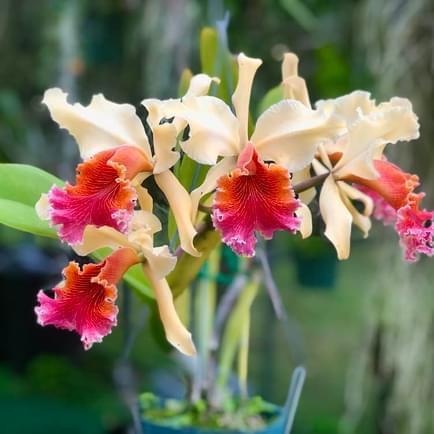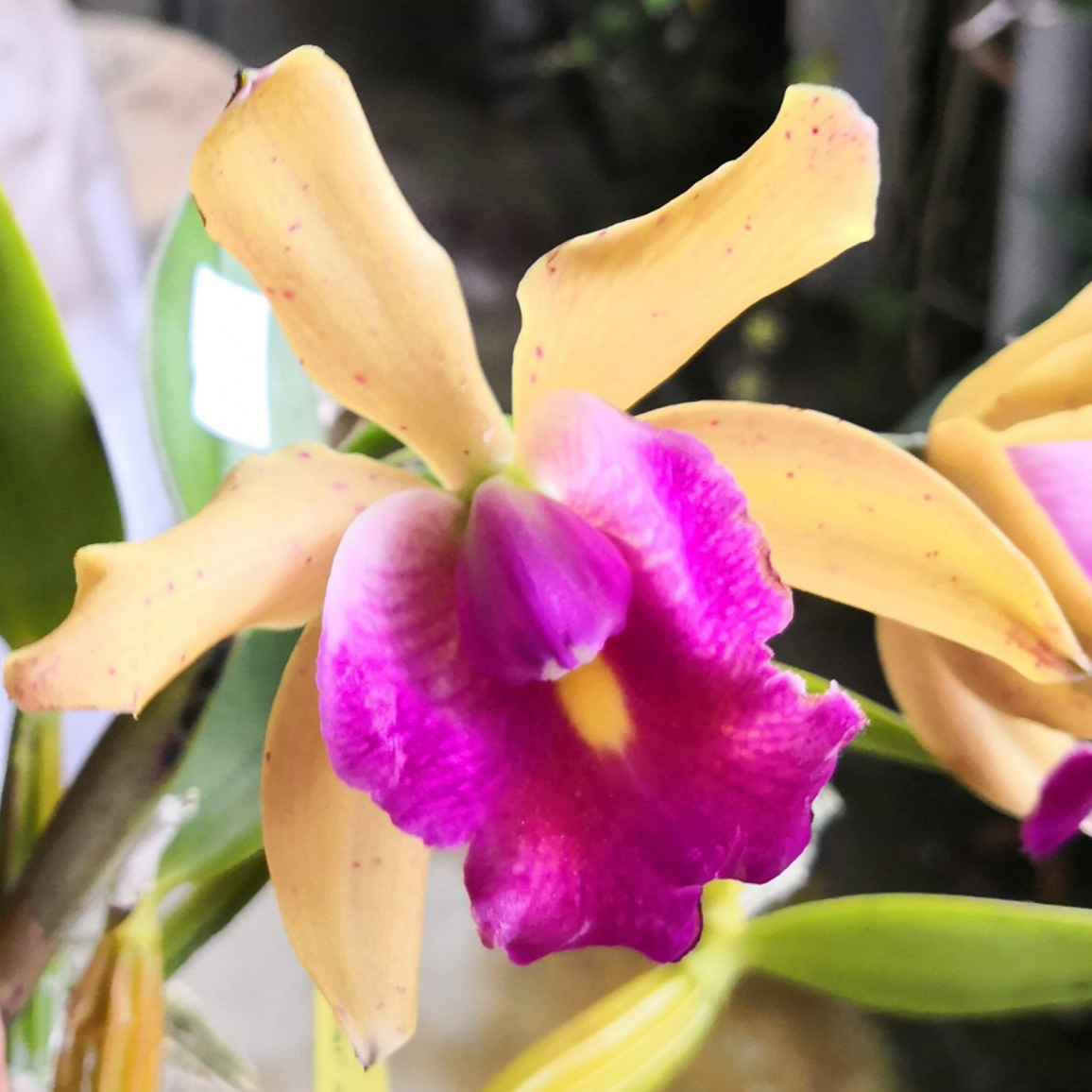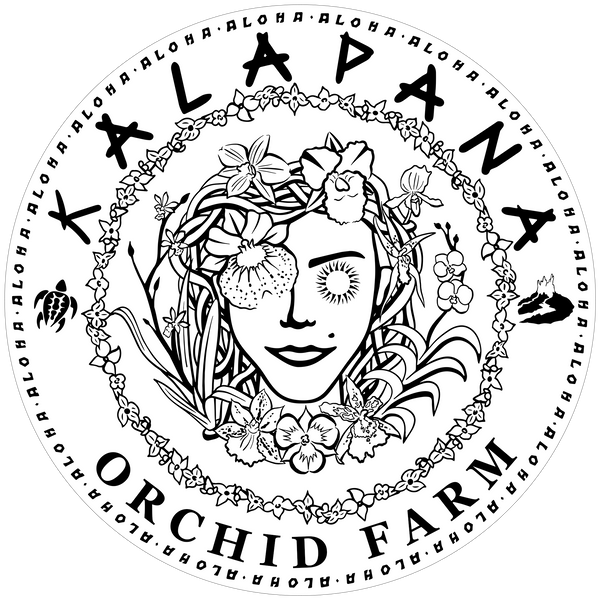Kalapana Orchid Farm
C. Small World x Triumphans
C. Small World x Triumphans
Couldn't load pickup availability
Here's an intriguing cross for you: Cattleya Small World x Cattleya Triumphans. This pairing brings together two very different, yet equally captivating, primary Cattleya hybrids, promising a delightful and often surprising display.
First, let's explore the parents:
Cattleya Small World is a primary hybrid registered by Rod McLellan Co. in 1975, a cross between Cattleya aclandiae and Cattleya luteola.
Cattleya aclandiae is a charming Brazilian species found as an epiphyte at low elevations near the coast, particularly in the state of Bahia. It's a warm-growing species that appreciates bright light. Its distinguishing features are its compact growth, slender pseudobulbs, and typically two relatively short, leathery leaves (2 to 3 inches long). The flowers, usually 1 or 2 per inflorescence and about 3 to 4 inches across, are yellowish-green with striking dark purple-brown blotches and spots, and a prominent rose-purple lip.
Cattleya luteola is another Brazilian species, also found in parts of Ecuador and Bolivia, typically growing as an epiphyte in a wider range of elevations from 300 to 4,000 feet. It tolerates warm to intermediate temperatures. It's known for its relatively small, compact stature and its usually greenish-yellow to bright yellow, often fragrant, flowers.
Cattleya Triumphans is a magnificent primary hybrid registered in 1904, resulting from a cross between Cattleya dowiana and Cattleya rex.
Cattleya dowiana is a truly iconic species, originating from Costa Rica and Colombia, typically found at elevations between 800 and 4,000 feet. It is considered a warm to intermediate grower. Renowned for its large, fragrant, golden-yellow flowers, it features a spectacular, ruffled crimson-purple lip adorned with striking gold veins. It's often called the "Queen of Cattleyas" due to its opulent beauty.
Cattleya rex is a superb species from Peru, growing as an epiphyte at elevations of 3,000 to 5,000 feet. It prefers intermediate temperatures. Its flowers are typically creamy white to yellow, with a prominent, ruffled lip marked with crimson and gold, often imparting heavy substance to its progeny.
When you cross Cattleya Small World with Cattleya Triumphans, you're combining the compact habit and spotting potential of C. aclandiae and C. luteola with the large, showy, golden-yellow flowers and magnificent lips of C. dowiana and C. rex. The result is an exciting array of possibilities! You can anticipate medium-sized plants, more compact than many standard Cattleyas, often with sturdy pseudobulbs bearing one or two leathery leaves, typically 6 to 12 inches long. The flowers are generally 4 to 6 inches across, with good substance, and exhibit a fascinating blend of colors. Expect shades of yellow, ranging from soft cream to vibrant gold, often with variable red or purple spotting inherited from C. aclandiae. The lips are a particular highlight, frequently ruffled and full, showcasing a rich magenta or purple color, often with the distinctive gold veining from C. dowiana. Many clones will carry a pleasant fragrance. This cross is noted for producing beautiful, rounder flowers with excellent substance.
Care Instructions:
Light: Provide bright, indirect light. A good rule of thumb is enough light to cast a soft shadow. Direct sun should be limited to early morning or late afternoon to prevent leaf burn.
Water: Water thoroughly when the potting medium approaches dryness. The frequency will depend on your environment, potting medium, and pot size. Ensure excellent drainage. Avoid prolonged periods of dryness or standing water.
Temperature: This hybrid prefers intermediate to warm temperatures. Day temperatures should ideally be between 70°F and 85°F, with a night drop to 60°F to 65°F.
Humidity: Maintain moderate humidity levels, between 50% and 70%. Good air circulation is crucial to prevent fungal issues, especially in high humidity.
Potting Medium: A coarse, fast-draining orchid mix is best, such as a blend of fir bark, charcoal, and perlite. Repot every 1 to 2 years, or when the mix breaks down, which usually coincides with new root growth.
Grown in 3" pots.
Share




